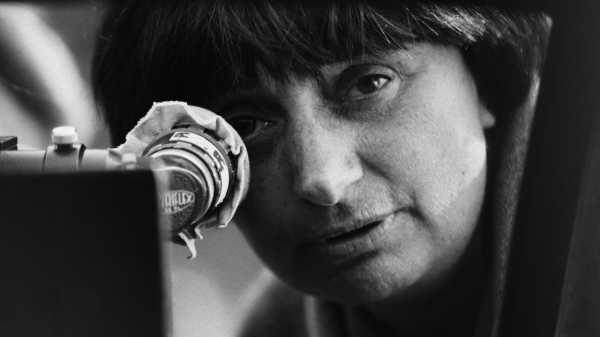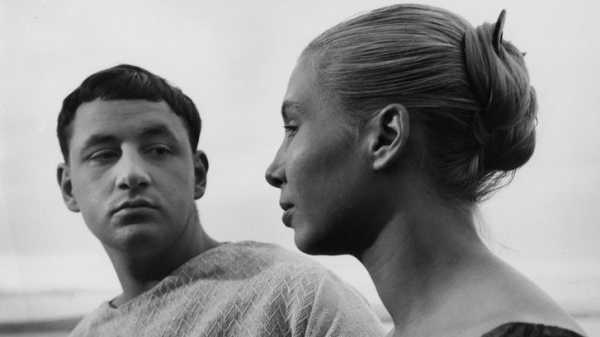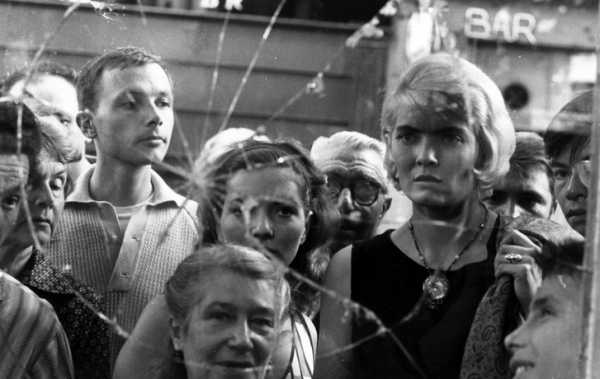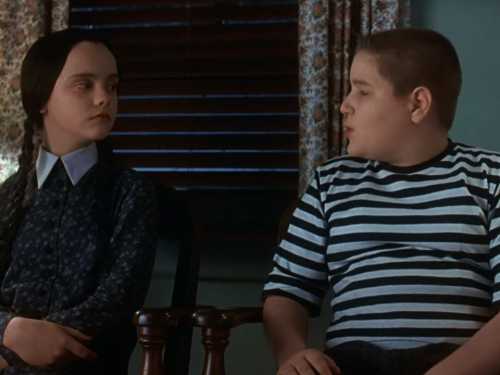
The challenge of modern cinema is to render a technical medium personal within a corporate industry. The forms that exemplify this aspiration are the self-portrait in art, the memoir or first-person novel in writing—and the home movie. Agnès Varda, who died this week, at the age of ninety, is one of the filmmakers who brought about the revolution in personal cinema. She led it from a very early age, virtually off the radar of critics and producers. She was so far in ahead of the world that she had to wait for it to catch up to her.
Varda made her first feature, “La Pointe-Courte,” at the age of twenty-six, in the coastal town of Sète, in the South of France, where she grew up. She had been living in Paris, studying art and working as a photographer, and went to Sète to shoot stills when she got the idea for a movie. It would combine two sides of her life: her observations of the daily economic and political struggles faced by residents of the fishing village, and the romantic turmoil of a couple visiting from Paris. (The man is originally from Sète, and brings his wife to his home town.)
There, at the start, Varda combined the elements that would inspire her entire career: personal experience, political insight and activism, an ardent vision for landscape, an intense curiosity about the lives of others, and frank confrontations with intimacy, romance, and love. In a 1993 interview, Varda explained that she made the film without having any background whatsoever in filmmaking. She’d seen very few movies in her life, and was completely unfamiliar with the works of famous directors. She added, “I was twenty-six and I didn’t even know that there existed a Cinémathèque in Paris! . . . My influences were painting, books, and life.”

Varda made her first feature, “La Pointe-Courte,” at the age of twenty-six, in the coastal town where she grew up.
Ciné-Tamaris
Needless to say, Varda got to know movies, and nourished her own with responses to what she saw in those of others. But, never having been imbued with their conventions and their norms, she worked from the start with an uninhibited inventiveness and an audacious freedom that few filmmakers in her generation of bold innovators—and, for that matter, few who followed in her footsteps—could match. Her originality in style and form was inseparable from her subjects and themes.
Drawing from her own experience and the lives she observed, Varda filmed women—women’s stories, women’s lives, women’s struggles, women’s faces, and women’s bodies. Her second film, “L’Opéra-Mouffe,” a short, from 1958, which she made while she was pregnant with her daughter, Rosalie, begins with images of a pregnant woman’s nude body. It blends a joyful erotic sketch with documentary sequences, largely of elderly people in dire straits, which Varda filmed in the Rue Mouffetard, which was then a poor neighborhood. In its sixteen-minute span, Varda rushes, lyrically and tenderly, passionately and ruefully, through the cycle of life, and from carnal pleasure to social and physical decay.
The fusion of direct observation and aesthetic contemplation, of documentary proximity and sociological reflection, led Varda to make films of passionate political engagement that drew, too, on her own experience. She was vigorously involved, in the early nineteen-seventies, in the battle to legalize abortion in France, and that battle—set in the much wider context of the lives of women (whether artists or working people) who took part in that struggle—gave rise to Varda’s great, all-too-rare drama “One Sings, the Other Doesn’t,” from 1977, which, in dramatizing the lives of two women, embraces the passion and ferment of an entire era. It’s a political film that’s also a tale of the birth of an artist, a social analysis that’s also nearly a musical. (The teen-age Rosalie Varda appears in the film, too.)
Varda is a filmmaker of place. Her penultimate feature, called “Faces Places” in English, has a similar French title (“Visages Villages,” or “Faces Villages”). Before that, she made “The Beaches of Agnès,” a cinematic self-portrait in which she discusses the primacy of landscapes in her life and, as she does in “Faces Places,” films her encounters with the new people she meets, and the others whom she already knows. This style was her lifelong procedure, her lifelong inspiration. In the early fifties, she moved to a house on the Rue Daguerre in the Fourteenth Arrondissement of Paris, and stayed there until the end of her life, opening the offices of her own production company there, too. In 1975, she made a film about her street, her house, her neighborhood, called “Daguerréotypes,” the premise of which was to shoot a film no further from her home than she could run an electrical cable.
She and the director Jacques Demy (best known for “The Umbrellas of Cherbourg”) met at a film festival in 1958 where both were showing short films. They married in 1962. When she made the science-fiction fantasy “The Creatures,” in 1965, she filmed it in the coastal town of Noirmoutier, where they had a home. The subject was a married artistic couple; the footage involved surveillance video that functioned as mini-documentaries of the lives of the local residents. After Demy’s death, from AIDS, in 1990, Varda dramatized the source of his artistic inspiration in “Jacquot de Nantes,” about Demy’s boyhood.
Varda made films with and about her friends and family. She put her friends Jean-Luc Godard and Anna Karina in the film within a film for her second feature, “Cleo from 5 to 7,” from 1961 —the story of a young singer who’s awaiting word from a doctor as to whether she has cancer—and got Godard to take off his eternal sunglasses on camera because, she told me in 2001, “I thought he had very beautiful eyes.” She also told me that she shot it as a silent film, because Godard “talked constantly.” The ninety-minute film is existential in the frankest sense—the confrontation, in real time, with one’s impending death—and is set in Paris, entirely within the two-hour span of the title. (The title of that film is a sort of dour pun—the French expression “from 5 to 7” means a furtive sexual encounter; in the film, it’s a matter of life or death.)

A still from “Cleo from 5 to 7.”
Ciné Tamaris
When she was in California in 1967, Varda filmed her relative, an elder painter named Jean Varda, in the short “Uncle Yanco,” from 1967. She filmed her friend and editor Sabine Mamou, as an actress (her only acting role), in “Documenteur,” from 1981, about a Frenchwoman in Los Angeles who’s there with her young son while separated from her husband. In 1985, Varda filmed a documentary portrait of Jane Birkin, “Jane B. pour Agnès V.,” which is simultaneously a vision of a friendship, a family, an artist’s range of talents and styles, a view of Varda herself collaborating with the actress from inside the frame, and a painterly portrait of Birkin’s face and body. (Two years later, she filmed Birkin along with her own teen-age son, Mathieu Demy, in “Kung- Fu Master,” a graceful yet grimly clear-eyed drama about an adult woman who begins a romantic relationship with a fourteen-year-old boy.)
Inspired by the art of painting from the start, Varda pushed even further into its handmade intimacy thanks to new technologies—especially small-format digital video. Some filmmakers took advantage of the mini-DV to replace, on a low budget, full-scale movie cameras. Varda, in her 2000 film “The Gleaners and I,” instead used it like a paintbrush, holding it in her hand and getting close to people and things for detailed and urgent proximity, for a sense of immediate physicality, for the visual feeling of personal contact. It also served as a mode of intimacy with herself. Varda made the film in her early seventies, and, as traces of age were visible in her face and body, she didn’t shrink from depicting herself and those traces. She made her state of mind and body inseparable from her work and, in later years, became one of the great cinematic self-portraitists.
The zenith of Varda’s acclaim came in these later years—in part simply because it took the world half a century to catch up with her artistry; in part, because films by female directors and the concerns of women have always been overlooked, but also because there was nothing Hollywoodish about her art. Throughout her career, she stood apart from the conventions of popular filmmaking. Other filmmakers of the French New Wave, in their homages and critiques of Hollywood styles and conventions, also invoked those conventions and brought them to the fore. Varda, by contrast, proceeded with a free detachment from them—though, in her 1965 film “Le Bonheur” (Happiness), a bitterly ironic romantic drama of an exquisite post-Impressionist painterliness (fields of flowers are nearly its co-stars), she did wink and nod critically at the styles of other films and filmmakers, namely those of other (and male) directors of the French New Wave.
In our 2001 interview, Varda spoke of a visit that she and Demy paid to Godard and Karina at a house that they were renting near Nice: “Jacques and I, we’re the kind of people who like to get the most out of life, to do whatever there is to do.” This spirit infuses Varda’s art as well; her passionately original sense of style and form does more than convey her life experiences; it embodies them. The fullness of her life is on view in her work—of which there’s still a piece remaining to be revealed, a feature called “Varda by Agnès,” which screened on French television this month and still awaits its American release.
Sourse: newyorker.com






